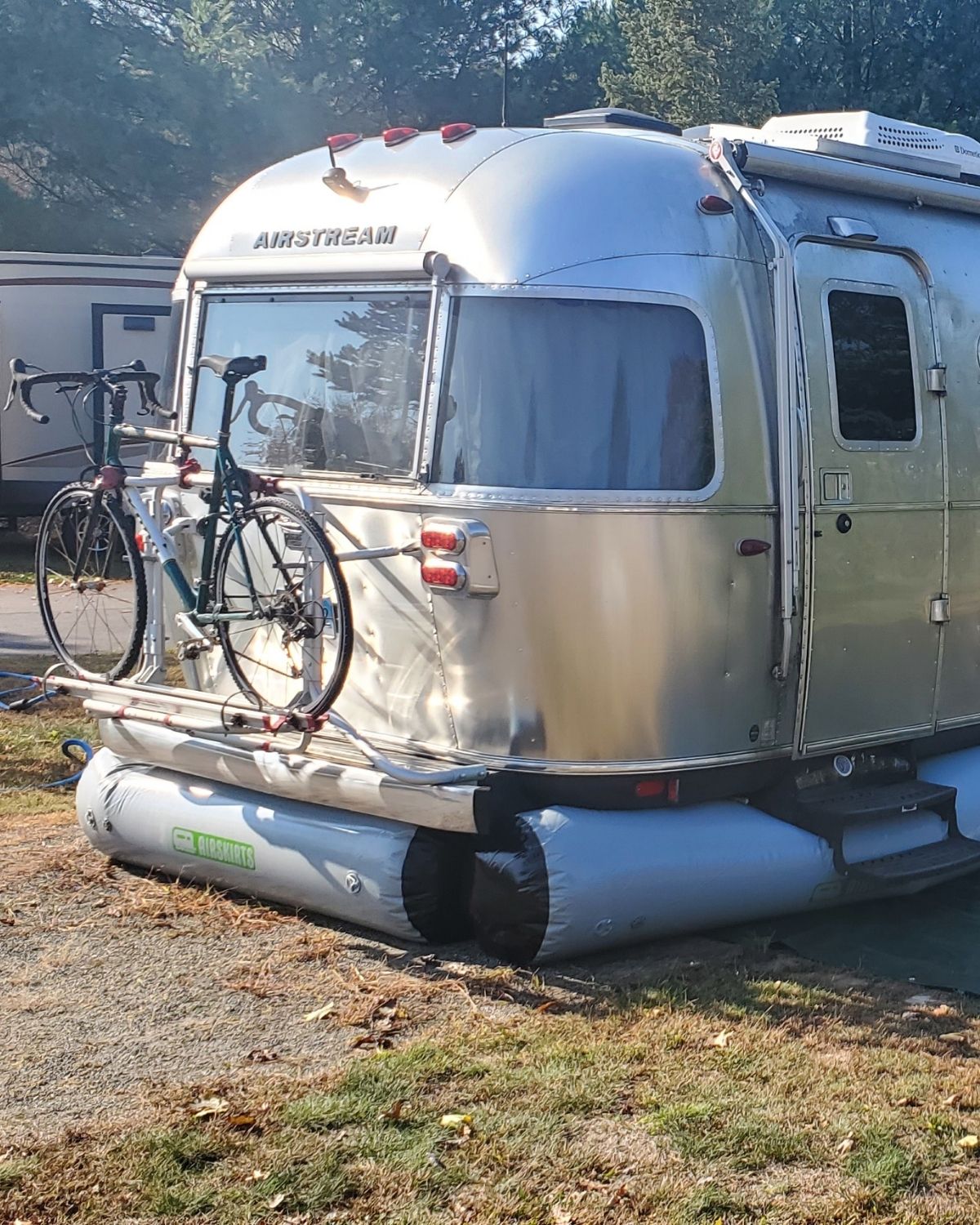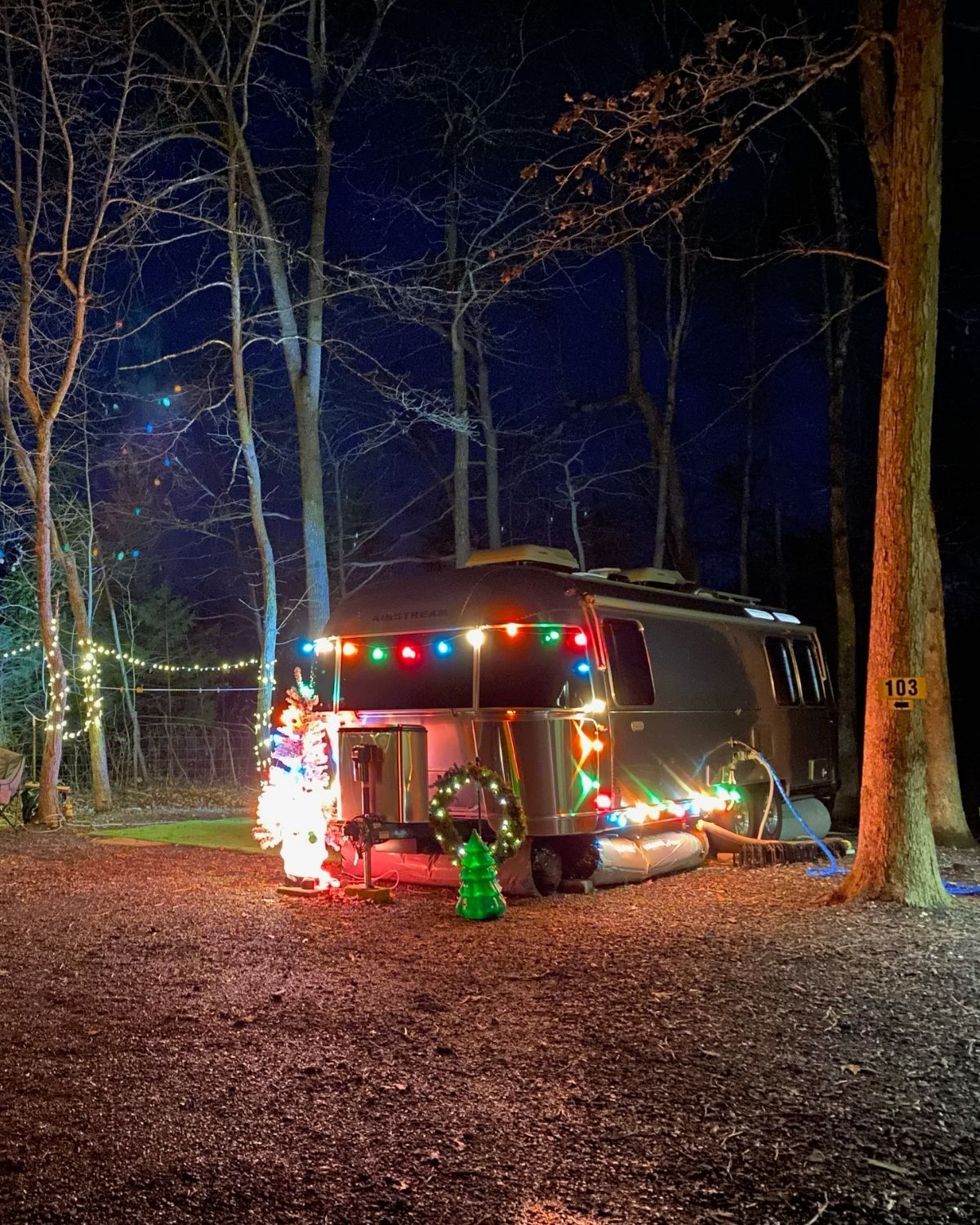Once you set up your RV, the constant wobbling or swaying is the first thing you notice. RVs don’t have a solid foundation like a house, so they will always sway and rock both side to side and front to back when you move inside them. The answer, of course, is to use stabilizer jacks.
But just like any other RV accessory, you might have noticed many types of stabilizer jacks with different designs, weight capacities, made with different materials, electric/mechanical operation, and different ways to set them up.
There are ten types of RV stabilizer jacks that come in. We will talk about each of them, explain their pros and cons, whether they are best suited for RVs or heavier motorhomes and fifth wheelers, how many you need to put up, and what you should look for when buying an RV stabilizer jack.
So let’s get going, shall we?
When you click on links to various merchants on this site and make a purchase, this can result in this site earning a commission. As Amazon Associates, we earn from qualifying purchases. For more info, please check our disclosure page.
What Does an RV Stabilizer Jack Do?
The lighter your RV, the more you will find it swaying or rocking when you move about. You should immediately bring out your RV stabilizer jacks when you notice this.
Stabilizer jacks create a solid foundation for the RV. They do this by connecting the RV to the ground at several points. In a way, they do precisely what a solid foundation does for a house during an earthquake (with the swaying and rocking representing the earthquake).
Another reason you need stabilizer jacks is that they stop damage to the RV and its parts. You might be ok with the constant movement and vibrations, but your RV isn’t designed to handle it. It puts strain on the nuts and bolts that hold everything in place, causing wear and tear.
On some surfaces, your RV can start to sink or shift, especially if the ground beneath has softer soil or there has been some rain recently. If you notice this, set up your stabilizer jacks immediately because a shifting base can do a lot of damage to your RV.
Some things to note when using Stabilizer Jacks
Never put up your stabilizer jacks until you have properly leveled the RV because they are not designed to hold the weight of the vehicle.
When using stabilizer jacks, a neat trick that you can use is to add leveling blocks underneath them. By doing this, you don’t have to extend the Stabilizer jacks all the way up, which makes them even more stable.
What Is the Difference Between RV Leveling Jacks and RV Stabilizer Jacks?
One thing that many people seem to get wrong is that they think Stabilizer jacks are the same as Leveling jacks. Both have their own purpose.
As the name suggests, leveling jacks make sure that your RV is absolutely level, even on uneven ground. This is important for a whole different set of reasons, such as ensuring that your electronic equipment, such as your fridge, is safe and your bed is level when you are sleeping. It also keeps your doors from opening up on their own.
On the other hand, stabilizer jacks will stop your RV from rocking side to side or front to back when you move about in it. Sometimes, there might be a strong enough wind on your campsite that can also cause your vehicle to sway on its base.
Leveling jacks are designed to hold the entire weight of the RV, whereas stabilizer jacks are only meant to stop the rocking and swaying motion. That’s why you should never depend only on stabilizer jacks to keep your RV in place.
Types of RV Stabilizer Jacks
1. Scissor Jacks
Scissor stabilizer jacks are a staple of RV and camper owners. Most campers already come with these jacks bolted to the frame.
All you need is to use a crank rod to crank them down until they touch the ground. You can also look for scissor jacks that come with a drill adapter. This will make the job of cranking the jack much easier.
If you don’t have them pre-installed in your camper or need additional stability, you can buy more scissor jacks at any hardware store or online.
These jacks are available in several weight ranges, such as 5,000 lbs or 7,500 lbs. However, a common mistake people make is to think that they can use them to lift the RV above the ground. Scissor jacks are not designed to be strong enough to do this.
Another thing to keep in mind is that you need to be very careful where your frame is before you deploy them. If you put scissor jacks in the wrong place, they might tear into the bottom of the RV.
Pros
- Scissor jacks are lightweight and portable.
- These jacks are quite cheap.
- They are very easy to use.
Cons
- They are manual, so if you have a weak grip or trouble bending down, these are not for you.
2. Electric Jacks
Electric jacks are perhaps the easiest to use. They operate on the RV’s 12V electrical system, so all it takes is a button push to get them ready!
They are a great choice if you need a quick and simple solution that does not require you to bend down or grip things. Electric jacks are much stronger than traditional scissor jacks, and they can work in conjunction with leveling jacks to give your RV extra stability.
Pros
- Fully automatic at the press of a button
- Built to provide a lot of stability
Cons
- If the 12V battery is running low or the jack’s motor goes out, you might have to crank it manually.
- These are much more expensive than scissor jacks. An electric jack may cost you up to 5 to 10 times more than scissor jacks.
- Electric jacks are slightly less stable. This is because they touch the ground at a 45-degree angle. Secondly, they are not as far away from the base of the vehicle as other types of jacks.
3. Hydraulic Jacks
If you have a bigger RV, a fifth wheeler, or a toy hauler, you should think about getting hydraulic jacks for stabilization. These are built to carry much more weight than scissor jacks or electric jacks.
Hydraulic jacks work on the same system that operates the height adjustment in most office chairs. There is a hydraulic fluid inside the jack, which gets pressurized when you press on the lever. This pressurized fluid magnifies the force that you are applying several times to lift up the RV. The upshot of all this is that these jacks are not easy to fix if something goes bad.
Pros
- Easy to use
- It can lift a lot of weight, so perfect for larger trailers.
Cons
- They have a complex mechanism that is hard to fix if you get a fault
- Expensive
4. Tripod Jacks
If you have a fifth wheeler, you might need some extra stability. A tripod jack can give you three new points of contact with the ground. This helps tripod jacks absorb a lot more vibration and movement.
Typically tripod jacks are not designed to work alone, and most are not rated to carry more than 5,000 lbs.
When buying a tripod jack, try to find one whose legs you can individually adjust because it makes it easier for you to set the jack-up if the ground is not level. Also, make sure that it has a threaded cap at the top so that you can hitch it perfectly. Otherwise, it may not be as stable.
Pros
- Provides extra stability for heavier vehicles such as 5th wheelers.
- Fairly easy to install and use.
Cons
- Tripod jacks tend to take a lot of space and can be much heavier than scissor jacks.
5. Permanent Jacks
As we mentioned earlier, you can set up most of these jacks permanently under your RV, which makes it one less thing to find space for in your camper.
Apart from tripod jacks, all the others can simply be bolted under the RV frame and retracted/cranked down whenever you need them. Tripod jacks fit into the kingpin, which you will need for hitching your RV to the tow, so you cannot install those permanently.
Pros
- It is one less thing to remember when packing your stuff up
- Saves space in your RV
Cons
- The jack is left exposed to the outside, which means you will see quicker rusting and corrosion.
6. Screw Jacks
Screw jacks work just like scissor jacks but have a solid triangular base at the bottom. This gives them a lot more contact area with the ground, which is what makes them very stable.
Screw jacks are named after the screw that you need to wind/unwind in order to install/remove these jacks. Just like scissor jacks, you can install screw jacks anywhere under the frame of your RV.
These jacks are cheap, reliable, and can be used almost anywhere, including at the front of the camper.
Pros
- A solid triangular base gives them more contact with the ground, making them stabler.
- Cheap and easy to install
- They are versatile; you can use them on the front of the camper as well.
Cons
- They have the same problems as scissor jacks – if you find bending down or screwing the jack a challenge, these jacks are not good for you.
7. Drop Leg or Drop-Down Jacks
If you have ever seen a bicycle stand, you know what a drop-down or drop leg jack is. It’s a retractable leg folded up against the trailer’s frame, hidden from sight but permanently installed so that you can put them down whenever you want to set up on a campsite.
Typically drop-legs are telescopic; you just need to extend them down to the ground by pushing on the foot pedal or lever. These jacks provide additional stability, especially in smaller campers. They are neatly tucked away and don’t need much effort to set up and retract them back. They don’t depend on electricity or hydraulics, so there is no chance of failure.
Pros
- Easy to use and retract back when not needed
- They will not fail you because they are entirely manual
Cons
- I would not recommend them for heavy RVs. They are great for added stability but don’t depend on these alone.
8. Full-Width Double Stabilizers
Double stabilizers are the ultimate in convenience and ease of setup. These have legs on both sides, so if you need a quick and easy way to stabilize your RV, these will do the trick perfectly. The legs on either side will come down simultaneously, saving you some time.
These are available in both electric and manual varieties, but we would recommend the electric setup. The electric double stabilizer will do the job of stabilizing your RV with just one button press.
Pro Tip: Look for stabilizers whose legs are adjustable to accommodate uneven ground.
Pros
- These will make the job of stabilizing your RV very easy
- They are easy to set up as well.
Cons
- Just like electric stabilizers, these are less stable than other options because the legs are inclined and closer to the base of the RV.
9. SteadyFast Stabilizers
For heavier RVs and rig owners, SteadyFast jacks are one of the most popular choices. You will have to spend a couple of hours installing the system, which includes adjustable strut braces fixed on any two adjacent sides of the rig.
You then have to fix these braces on the other end of the landing gear in a triangular shape. It’s the shape and the fact that the jack touches the rig at three different points for support that make this jack so stable.
Once you have the jack installed and ready, it remains attached to the rig, and you just need to retract it when you are ready to travel.
Pros
- Very stable, even for larger rigs and RVs
- It is a premium product designed to be rugged yet simple to install for a DIYer.
Cons
- Expensive. These jacks retail at almost five times the price of a scissor jack.
10. Universal Stabilizers
As the name suggests, universal RV Stabilizers can be used on almost any type or size of trailers, cargo carriers, fifth wheelers, and RVs.
Universal stabilizers have two adjustable legs mounted onto a single beam which you can insert under your RV’s frame. Then, simply adjust the legs, strap them together using the strap which comes in the package, and ratchet the strap to make sure the jack fits tightly under the frame[4].
Pros
- Easy to use
- Work well under almost any type of RV or trailer
- Lightweight and portable
- Inexpensive
Cons
- The strap fabric tends to wear out over time, so you have to get a replacement.
How Many RV Stabilizer Jacks Do You Need?
The answer is: it depends.
For lighter RVs, two stabilizer jacks on either side should be able to do the trick. However, we would suggest that you should have at least one under each corner. If you are using a trailer, you should also add stabilizers behind the tires for additional stability.
The more stabilizers you add, the better your stability will get. So there is actually no limit to how many you can add. To complete my initial sentence, it depends on how much wobble and swaying you are comfortable with.
What to Look for in an RV Stabilizer Jack?
Design
There are three questions that you should get answers to about the design of the jack:
- How stable will your RV be when you install this jack?
- How much effort will it take for you to set it up/take it down, and will it require additional tools or materials that are not included in the product itself?
- How long will this product last?
Weight Capacity
Stabilizer jacks are rated for weight capacity. You need to use jacks that can hold the weight of your RV. Obviously, a fifth wheeler or A big trailer will need a higher rated jack as compared to a smaller van.
On the other hand, you should not buy a jack with a higher weight capacity than what you need because not only will it be expensive, it will likely be heavier and may take up more space in your RV.
If you try to use a jack that is rated for a lower capacity than your RV, it will wear out very quickly. If your jack fails, it might destabilize the vehicle causing damage to the other stabilizer jacks. In the worst case, it might even cause damage to your things inside.
Construction Material
Stabilizers are usually made with either aluminum or steel because both these metals are durable and strong. Steel is heavier, whereas aluminum is lighter.
If you buy steel jacks, make sure that they are corrosion and rust-free stainless steel ones. This is even more important if you plan to put them up permanently under your RV.
Powder-coated steel is also a good option because it can resist rust and damage longer, and the product will not dent easily.
Ease of Use
Setting up a campsite for an RV is not an easy job, so you don’t need to add one more complexity to your life. Among the options above, electric jacks and full-width double stabilizers are perhaps the easiest to set up for you.
On the other hand, something like a SteadyFast stabilizer will need at least 1 -2 hours even for an experienced DIYer to set up. The compromise here is between stability and ease of use.
Conclusion
Most people assume stabilizer jacks and leveling jacks are the same things, but they are not. You need stabilizer jacks to keep your RV from rocking and swaying.
While the most common stabilizer jacks are scissor jacks, you should look at hydraulic jacks and SteadyFast stabilizers if you have a heavy fifth wheeler or motorhome.
Nothing beats electrical stabilizers and full-width double stabilizers for ease of use. Tripods are great for using under the kingpin, drop legs add extra stability to the rear, and universal jacks can add a bit of stability anywhere you put them.
Angela Devaney

Angela Devaney, a former IT project management professional, embarked on an adventurous journey of full-time travel, which included touring West Africa in a converted overland truck and converting an ex-military 4×4 Sprinter van into a camper for a five-year South American expedition. She now utilizes her hands-on experience to create practical RV living and van life advice as a full-time digital media producer, reaching over a million users annually through her YouTube channel, blog, and newsletter. Angela also lends her expertise as the editor-in-chief of the Campervan Electrics Handbook.








